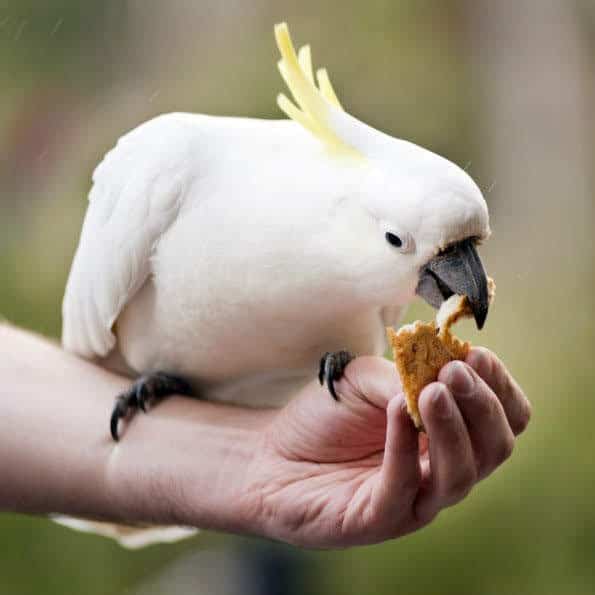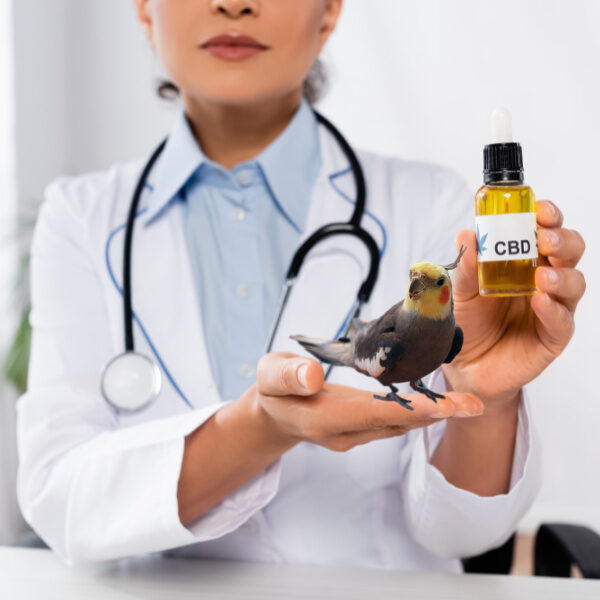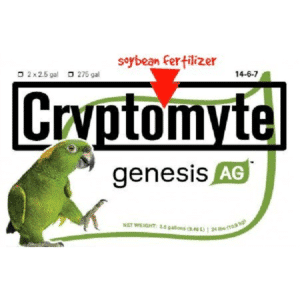Last Updated on by Mitch Rezman
Hi Mitch,
Have you ever done an article on the true lifespan of parrots in captivity?
When I was first researching parrots (in the early 1990s) I read in Multiple places that Greys and other large parrots lived to their 80s.
But it turns out most don’t get even close to that.
We need more accurate info.
From what I’m reading lately we also are overfeeding them and not getting them enough exercise.
I thought I knew a LOT about parrots and now I’m realizing I was crucially misled about some stuff.
(My grey, Bongo, died last week of kidney and liver failure. She was 26.)
Melissa
We are sorry for your loss Melissa,
The first problem is there is no aggregated data like they keep on humans.
It’s not “we also are overfeeding them and not getting them enough exercise.”
We don’t overfeed our birds according to one veterinarian who performed many necropsies (animal autopsies), 60% of birds she examined died of malnutrition.
Oversupplementation can be as dangerous as nutritional deficiency.
When you feed your bird “chop” your bird may become malnourished.
The cost of feeding a bird is not based on the price per kilogram of food but the price per kilo-calorie of digestible energy.
He writes further
“Some Breeders have a romantic notion that captive diets that are complicated, labor-intensive, using expensive ingredients are the most nutritious.
Yet it is possible to feed easy to prepare, cost-efficient diets that do not compromise proper levels of essential nutrients”.
Mark Hagen on Avian Nutrition Research
Mark Hagen who has a master’s degree in Agriculture, founded H.A.R.I where he has been researching pet bird nutrition for 30 years using 250 pairs of domestic and wild-caught parrots.
Mark also donates to the Ontario Veterinary College
Letter of support from Ontario Veterinary College to HARI 2018
I’ll occasionally poke around Facebook and ask someone who proudly displays their latest 450-gram chop (1 lb) who they are going to serve to their 165 gram sun conure
“Because your bird has 3000 – 6000 feathers and feathers require amino acids and amino acids are produced from protein, where is the protein in the chop?”
They always start with “Kale is high in protein!”
They will never respond again after I write the words “There are 6 grams of protein in 30 grams of kale, if your bird needs 12 grams of protein, it would have to eat half its body weight in kale – daily.”
We have just added a tool to our (KETO) nutrition arsenal – A Recipe Nutrition Calculator
I entered the following ingredients from the first article that came up in a search for the term “bird chop recipe” on Google’s SERP 1
1 cup dry quinoa (makes about 2 cups when cooked), 2 carrots, 1 broccoli, 1 medium beetroot, 6 chilies, ¼ cup flaked almonds, ½ cup rolled oats. Cook quinoa, chop all other ingredients and mix everything together.
Once made, refrigerate enough for 3 days.
Freeze the rest in portions big enough for 1-2 days.
Depending on the size of your bird, you may do this in an ice-cube tray, small Tupperware containers or freezer bags.
A convenient freezer method is to scoop the mix into the cups of an egg carton, pressing firmly down.
The cups can then be fed frozen in foraging toys.
Quantities to feed:
It depends on your bird but as a rough guide.
- Budgerigar: 1-2 teaspoons
- Cockatiel/Conure/ringneck: 1 – 2 tablespoons
- Eclectus/Galah/Cockatoo/Amazon: 2-4 tablespoons
This is Higgins Intune Harmony Parakeet 2 lb
Guaranteed Analysis
- Crude Protein (Min.) 13.5%
- Crude Fat (Min.) 7.0%
- Crude Fiber (Max.) 3.0%
- Moisture (Max.) 8.0%
- Calcium (Min.) 1.0%
- Phosphorus (Min.) 0.8%
- Vitamin E (Min.) 200 IU/kg
- Ascorbic Acid (Vitamin C) (Min.) 25 mg/kg;
- L-Carnitine (Min.) 20 mg/kg
- Omega-6 Fatty Acids (Min.) 1.10%
- Omega-3 Fatty Acids (Min.) 0.40%;
- Total Lactic Acid Bacteria (Min.) 2 x 105 cfu/g*
- (Enterococcus Faecium, Lactobacillus Acidophilus, Lactobacillus Casei).This pellet mix with dried vegetables and fruit bits offers a much higher protein offering.
And so it goes – we are starving our birds and no one cares – it’s called being anthropomorphic
Air and water pollution contribute to a lower quality of life for all.
Humans and (11) birds in our household only drink filtered water.
Flying into closed windows, sharp-cornered glass tables, and open mirrors happens far too often.
Predictions of longevity much like politics and the stock market are a slippery slope.
There is no reason not to exercise your bird when you have Exercise Your Bird – Why & How – Videos
Best – MitchR
Follow up question: From Melissa
to Mitch
It’s so confusing.
Our vet had told us to feed Bongo only pellets and nutri-berries, but that looks so different from what they eat in the wild.
I also read in multiple sources that birds shouldn’t have a high protein diet as it made them more prone to hypocalcemia.
Mitch responds: You are right there are no pellet trees in the rainforest.
Author Profile
Latest entries
 PigeonsJune 20, 2025How Do Parrots Thrive in Cities Outside Their Native Habitats?
PigeonsJune 20, 2025How Do Parrots Thrive in Cities Outside Their Native Habitats?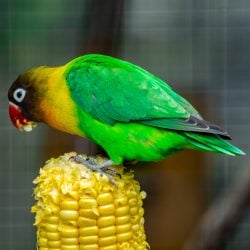 Feeding Exotic BirdsJune 20, 2025Is Corn On the Cob Safe for Pet Birds?
Feeding Exotic BirdsJune 20, 2025Is Corn On the Cob Safe for Pet Birds? Bird & Parrot AnatomyJune 19, 2025Would You Like a Comprehensive Guide for Training Your Bird?
Bird & Parrot AnatomyJune 19, 2025Would You Like a Comprehensive Guide for Training Your Bird?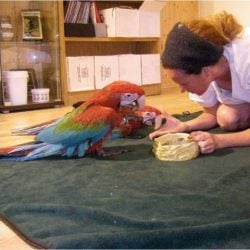 Feeding Exotic BirdsJune 19, 2025Here Are Three (Video) Strategies to Help Your Bird Forage
Feeding Exotic BirdsJune 19, 2025Here Are Three (Video) Strategies to Help Your Bird Forage
